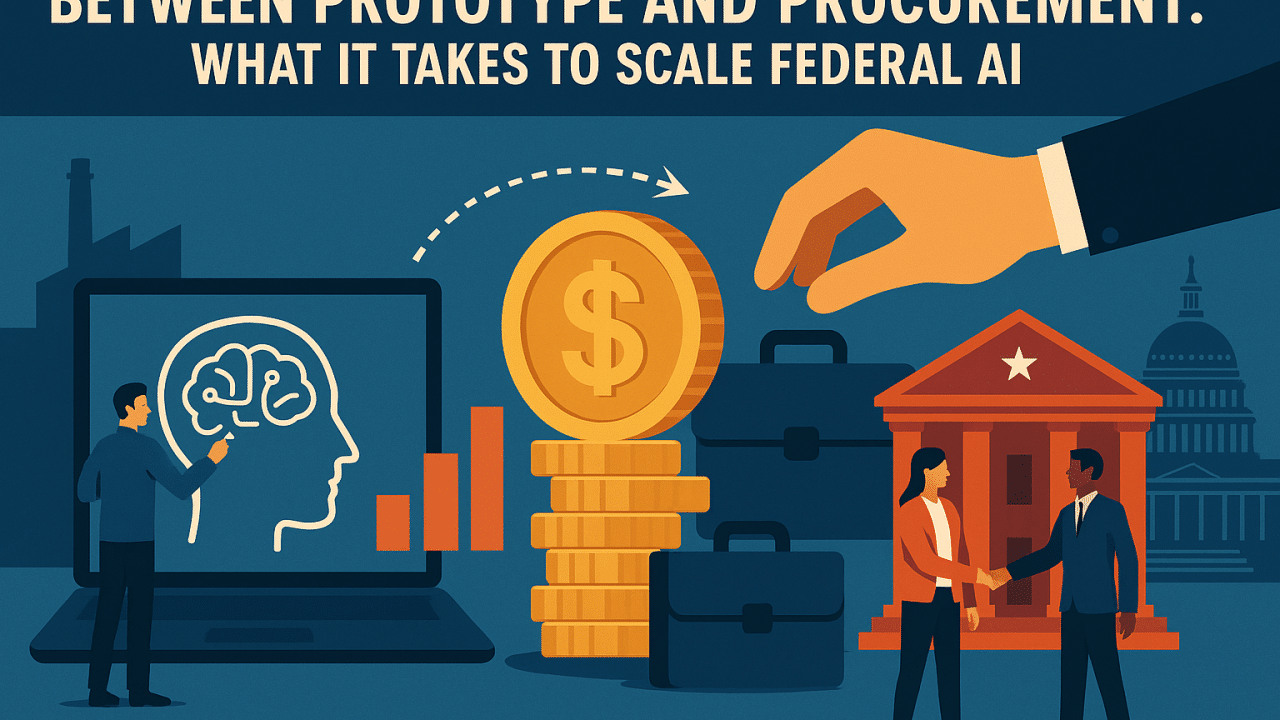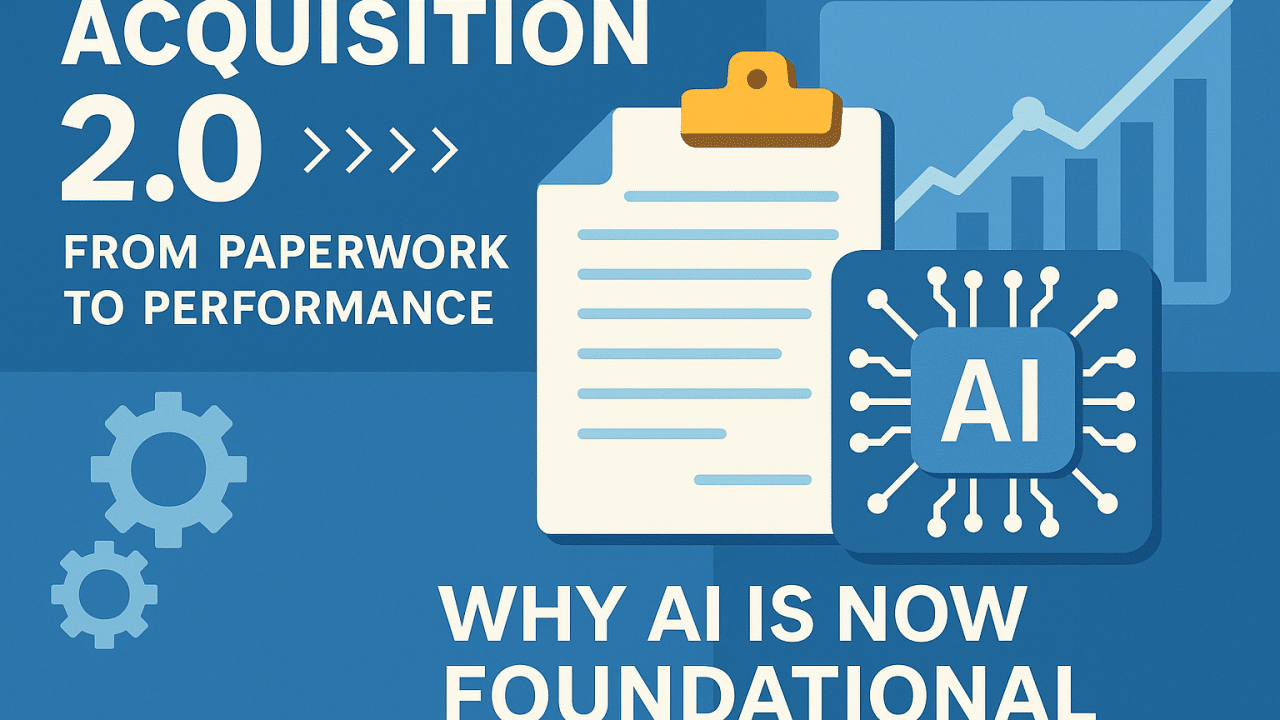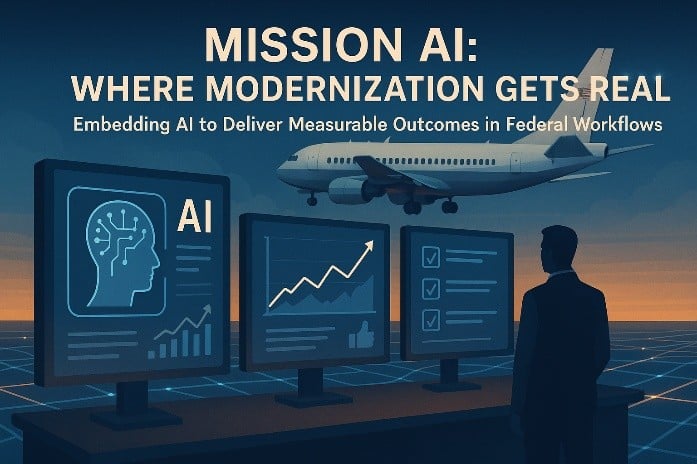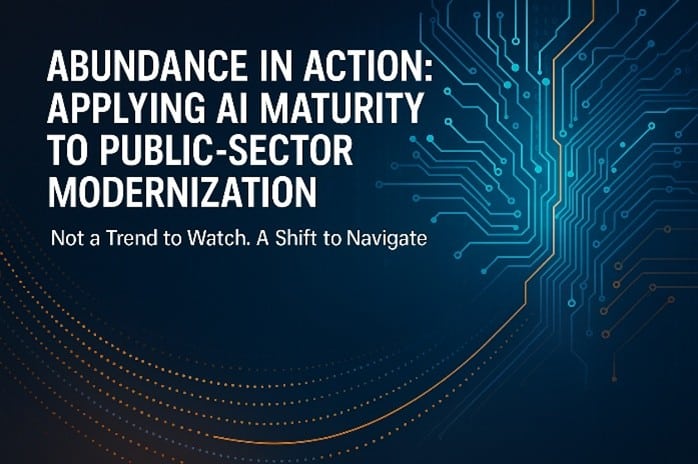Thrive in Five Newsletter: From Pilot to Performance - Real AI Wins for Federal Teams

Federal managers are clear: their teams need AI that actually works when the stakes are high. The ones who figure this out now will outpace those stuck in endless pilots.
Our Senior Principal Jesse Lambert nails it in his new piece, “Mission AI: Where Modernization Gets Real.” Teams want AI that’s reliable, explainable, and responsive — tools that deliver under pressure.
So, what sets successful programs apart? Jesse points to three factors:
- Co-designed solutions with frontline users
- Rollouts timed to mission rhythms
- Early wins that build field-level trust
The takeaway: “Adoption doesn’t come from strategy presentations. It comes from workflow efficiency wins.”
This month’s newsletter gives you five resources to deliver those wins—from the $532B federal AI opportunity to 37 agency success stories and proven implementation guides.
1. Build Your Strategic Foundation: Understanding the $532 Billion Federal AI Opportunity
Strategic leaders need compelling business cases before launching transformation initiatives. The June 2025 House Oversight Committee analysis reveals that federal agencies could unlock productivity gains worth up to $532 billion annually by 2028 through thoughtful AI adoption — but only with systematic implementation approaches that keep people at the center.
📖 Read the Analysis: House Oversight Committee AI Report
This analysis equips federal managers with the strategic foundation necessary to advocate effectively for AI investment, a critical step in advancing organizational AI initiatives. The report reveals that agencies can systematically leverage AI to boost productivity, slash operational costs, and deliver superior mission outcomes. The emphasis that AI is “no longer some futuristic idea — it’s here” positions federal managers to move beyond experimentation toward structured implementation that delivers measurable results for their teams and stakeholders.
2. Transform AI Into Strategic Advantage: How Federal Leaders Are Empowering Their Workforce
Successful AI adoption requires leaders who view technology as a force multiplier for human capability rather than a replacement strategy. Recent analysis from the Partnership for Public Service reveals how federal managers can systematically transform AI from experimental technology into strategic advantage that enhances team effectiveness and mission delivery.
📖 Discover the Strategy: AI as Strategic Advantage for Public Sector
This resource reveals that AI leaders will be agencies that spend smarter, not more — strategically implementing AI to boost human decision-making while reducing overall technology costs. The analysis demonstrates how public-sector leaders use AI as a force multiplier, allowing teams to focus on higher-value strategic work while automating routine tasks. For federal managers launching AI initiatives, this represents a comprehensive leadership approach that drives both organizational effectiveness and workforce development through systematic, human-centered implementation.
3. Access Your Implementation Blueprint: GSA’s Complete Framework for Federal AI Success
Complex transformations require structured guidance that balances technical requirements with human considerations. GSA’s comprehensive AI implementation guide provides federal managers with the complete framework needed to successfully launch AI initiatives while building organizational capacity and empowering teams.
📖 Access the Guide: GSA AI Implementation Framework
Designed specifically for federal decision-makers who don’t need technical AI expertise, this guide addresses the core challenge of implementation clarity. The framework shows how to establish central AI resources as expertise hubs, create Integrated Agency Teams that collaborate across offices, and implement governance structures that support both embedded AI practitioners and novel project teams. Most importantly for workforce development, the guide demonstrates how to structure AI talent development through recruitment, certification, training, and career pathways — ensuring your people grow alongside the technology.
4. Learn from Proven Success: How 37 Federal Agencies Are Already Winning with AI
Before designing your own AI strategy, study what’s already working. The 2024 Federal AI Use Case Inventory reveals over 1,700 successful AI applications across government — more than doubling from the previous year — with practical examples that demonstrate sustainable, human-centered approaches to implementation.
📖 Explore the Use Cases: Federal AI Use Cases in Action
This comprehensive analysis provides federal managers with concrete examples of successful AI implementation across their peer agencies. Rather than starting from scratch, you can adapt proven approaches: 46% focus on mission-enabling applications like HR and procurement, while agencies are developing 50% of use cases in-house, demonstrating internal innovation capacity. The systematic breakdown shows how DOL uses AI assistants for procurement questions and USPTO employs AI to help patent examiners — practical applications that enhance rather than replace human expertise.
5. Prepare for What’s Next: AI Agents and the Evolving Federal Workplace
Strategic leaders anticipate future capabilities while building current foundations. The emergence of AI agents — virtual assistants that can perform tasks autonomously — represents the next evolution in federal AI implementation, moving from tools that assist to systems that can take independent action within structured frameworks.
📖 Explore the Future: AI Agents in Federal Government
This analysis explores practical applications like agents that help implement complex regulations or handle routine customer service interactions, with expert guidance to “start small” and focus on highly repetitive, high-volume tasks as initial implementation areas. The key insight for federal managers is that successful deployment requires leadership planning rather than just IT implementation—positioning your team to leverage autonomous AI capabilities while maintaining human oversight and strategic direction.





